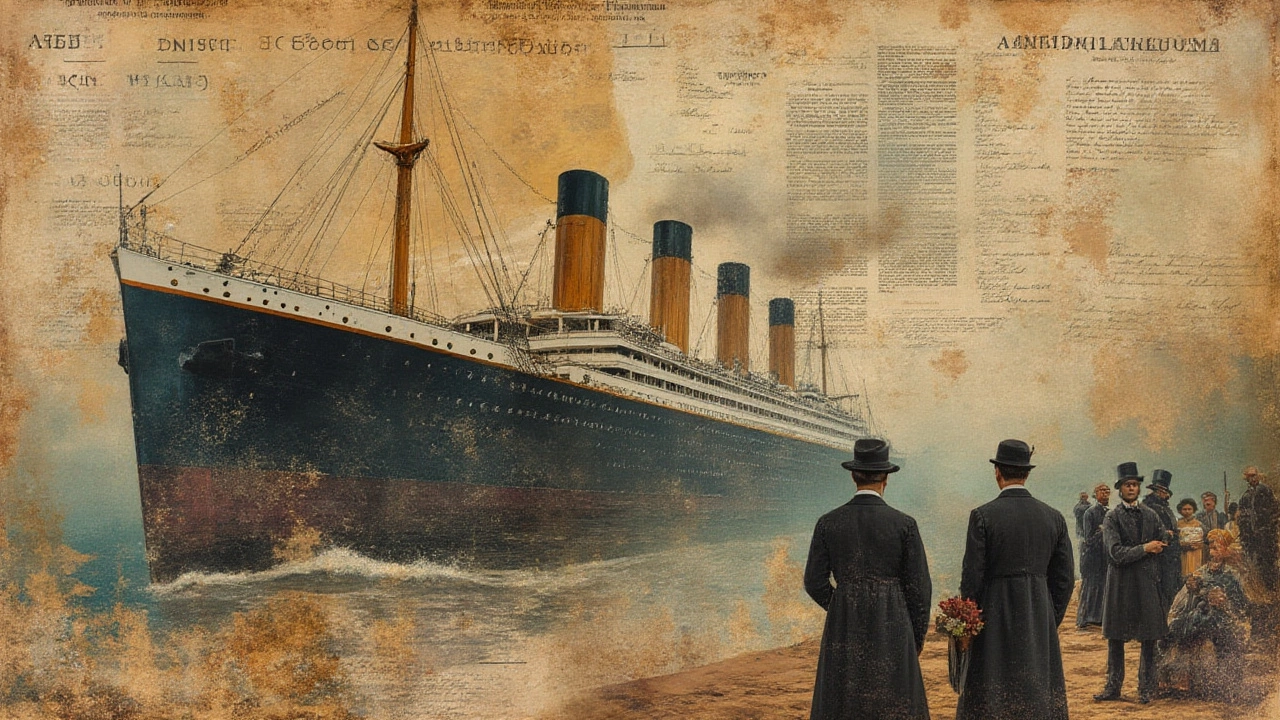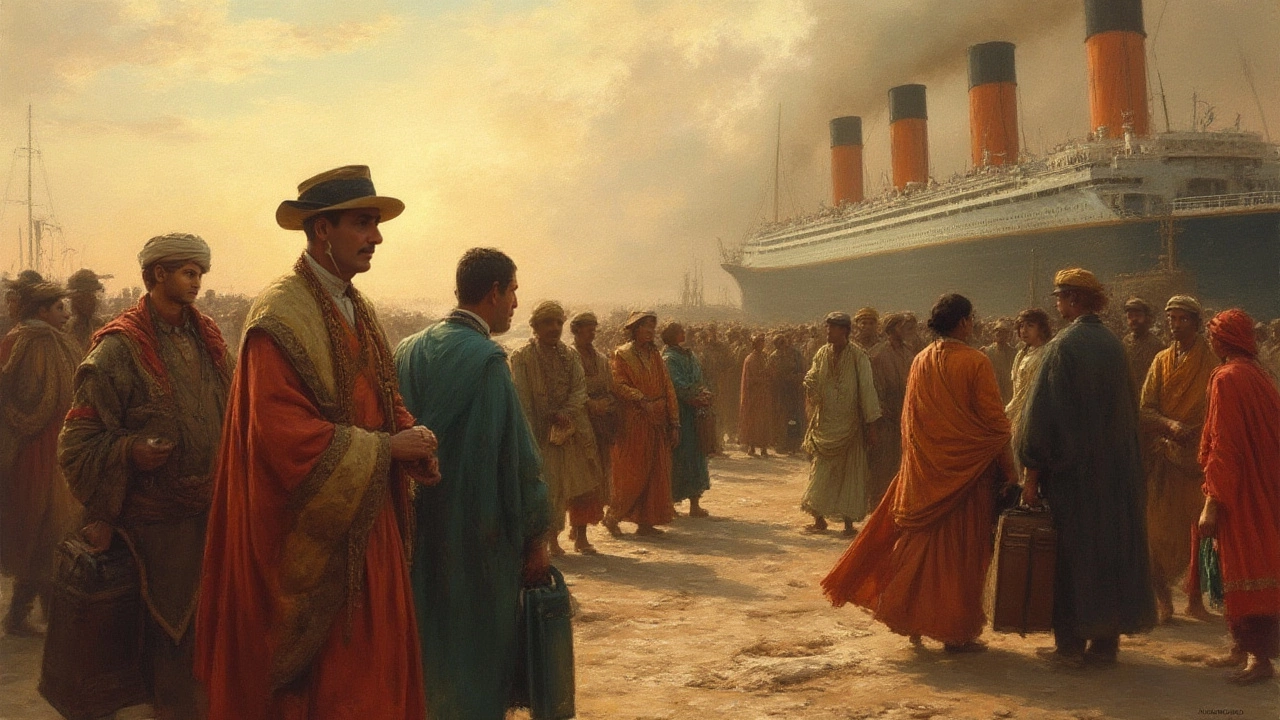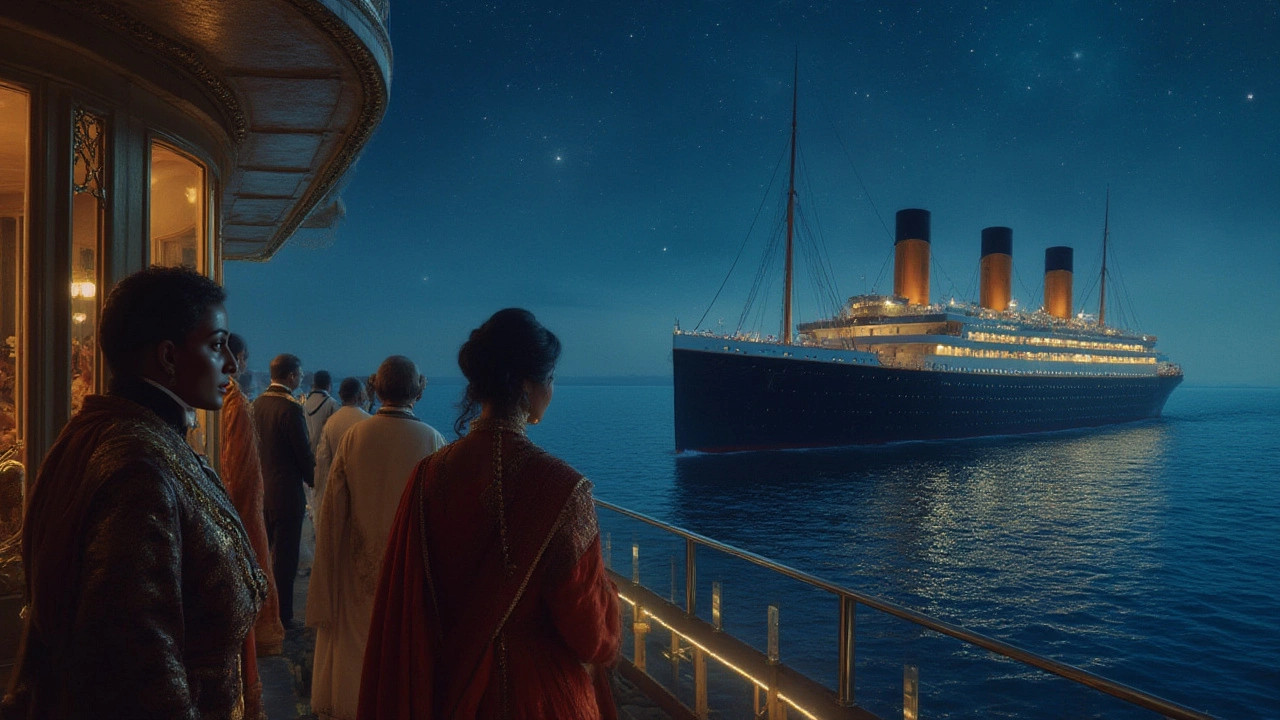Sink into the confusion around the Titanic for a moment. Most people have some image stuck in their heads, and it almost always looks a lot like what you saw in James Cameron’s movie. There’s Leonardo DiCaprio on the bow, arms outstretched, Celine Dion’s voice echoing in your ears. Somewhere in that shaky memory, reality blurs into bright stage lights and CGI icebergs. But here’s the twist—when people ask, “Is the Titanic a historical fiction?” they don’t just mean the movie—they mean the whole legend. Are we clinging to a romantic story, or was it all true? It’s a question that splits fans, historians, and everyday folks on late-night Reddit threads. I’ve heard it at dinner parties, at work, and plenty of times from my wife Delia when she’s had one too many Titanic-themed podcasts playing in the kitchen. The story is so gripping, so heartbreaking, it almost feels made up. But was it? Let’s pull back the velvet curtain.
The Real Story: Titanic’s True Events
The Titanic wasn’t dreamed up by an imaginative novelist. The ship was the pride of the White Star Line, the biggest moving object ever built when it was launched. On April 10, 1912, this behemoth set sail from Southampton, England, bound for New York. Imagine 2,240 people—some of the richest folks on the planet, and some clinging to dreams for a fresh start in America—all packed into a ship that was believed to be ‘unsinkable.’ There’s no exaggeration there: the ship’s designers and the press hyped that claim into legend.
But then disaster struck. Four days into the voyage, with music playing and champagne flowing, the Titanic hit an iceberg at 11:40 pm on April 14. That part isn’t Hollywood magic. The iceberg shredded the starboard side, opening six compartments to the freezing Atlantic. On April 15, at 2:20 am, the ship broke in two and sank. By sunrise, 1,500 people were dead. That figure isn’t just a number—it’s about double the population of the small town in Nebraska where I grew up.
The facts are absolutely real. Survivors’ testimonies, wireless messages, first-hand accounts from the Carpathia crew (the ship that rescued the survivors)—it’s all documented. There’s even a table for you, because sometimes you just need to see the reality laid out:
| Fact | Details |
|---|---|
| Date of Maiden Voyage | April 10, 1912 |
| Number of People on Board | 2,240 |
| Lifeboat Capacity | 1,178 |
| Actual Survivors | 705 |
| Total Deaths | 1,517 |
| Ship’s Length | 882 feet 9 inches |
Those are cold, hard numbers. And yet, most people know the Titanic not from textbooks, but from books, films, and pop culture turning points. It’s here the storyline warps and we get into the wild territory of historical fiction.
Fiction Mixing with Fact: Where Stories Diverge
If you’ve only seen the blockbuster, you’d think the Titanic’s story was all about Jack and Rose. Sorry, but Jack Dawson and Rose DeWitt Bukater never existed—they’re pure Hollywood. Sure, some stories in the movie were inspired by real passengers: the elderly couple who chose to stay together in bed as the ship sank, for example. That’s based loosely on Isidor and Ida Straus, co-owners of Macy’s, who reportedly refused to be separated in the final moments.
Plot twists like the “unsinkable Molly Brown” also have some truth—Margaret Brown, a socialite from Denver, did survive and famously urged boat crew to row back for survivors. Even the band playing as the ship went down? That one’s legit. Led by Wallace Hartley, the musicians played for as long as they could. What song they played is disputed. Some said it was “Nearer, My God, to Thee,” but—again—this is debated, and might be colored by other shipwreck tales or poetic memory.
Hollywood has a habit of filling in the blanks with emotion and spectacle. In reality, there was no romance on the bow, no car-steaming love scene in the cargo hold, no villainous fiancé chasing lovers around. Cameron’s Oscar-winner borrowed freely from history, but shaped it to tug at heartstrings. I get it: storytelling loves drama. But every time the story cools a bit, you need to remember, did it happen, or did it just happen on a screenplay?
And it’s not just the movie—dozens of novels jumped on the Titanic train. Authors spiced up the narrative with spies, hidden treasures, or secret aristocratic scandals. One early example is Morgan Robertson’s 1898 novella “Futility, or the Wreck of the Titan,” which, bizarrely, predicted a giant ship named Titan sinking in the North Atlantic after hitting an iceberg—a full 14 years before the real tragedy. Readers love connections like these. But true, they are not.

The Genre of Historical Fiction: What Does It Really Mean?
So what actually is historical fiction? The genre weaves real historical settings or events with invented characters or dialogues. The goal is to immerse readers in an era or crisis. It’s not fake news, but it does give the imagination some wiggle room.
Take Ken Follett’s “Fall of Giants” or Hilary Mantel’s “Wolf Hall.” Both ground their stories in true events. The characters might interact with real figures or be inspired by them, but you’ll also find side plots, motivations, and conversations that no historian could verify. Historical fiction lets writers play with the “what if” while still respecting “what really was.”
The Titanic is a natural target for historical fiction. The disaster, with its doomed romance, self-sacrifice, cowardice, and heroism, feels tailor-made for novelists and screenwriters, which is why in the Historical Fiction section of bookstores you’ll see so many Titanic covers. I’ve lost count of Titanic-inspired stories on the shelves every year around April. Some of them get deeply researched, sharing details like the way the dining rooms looked, or what kinds of hats the passengers wore. Others are just riffs on the legends. If you want real-life drama, you can’t do much better than a supposedly unsinkable ship going down on its first voyage.
But the Titanic itself—the ship, the people, the sinking—is history. The stories spun around it? That’s where historical fiction kicks in.
The Titanic Movie: A Historical Fiction Classic?
If anyone’s responsible for making “historical fiction” and “Titanic” so closely linked, it’s James Cameron. His 1997 blockbuster was careful in its accuracy with ship design, costumes, even details of the officers’ procedures during the evacuation. Cameron dove to the real wreck to study the layout. He recreated first- and third-class cabins with the correct carpets and fixtures, thanks to obsessively detailed blueprints. Even the china used for meals matches what was found on the sea floor by Robert Ballard’s team, who discovered the wreck in 1985.
But then you get Jack and Rose. That’s historical fiction in action. Their relationship, class struggle, and misadventures are all made for the script. And this approach works. Leonardo DiCaprio and Kate Winslet’s on-screen chemistry brought the audience into the heart of the disaster. But don’t mistake their story as fact, no matter how real it feels.
Still, Cameron crammed in a lot of honest-to-God moments: the break-up of the ship, the water rapidly flooding the boilers, white flares streaking into a starry sky while lifeboats rowed away. He even brought Harold Bride and Jack Phillips, the real radio operators, into their own subplots. Some real survivors—like Ruth Becker—saw the film and praised its attention to detail with the ship’s look and the feeling of chaos during the sinking.
- The movie’s epic budget (over $200 million) allowed for near-photorealistic sets.
- Its success (over $2 billion grossed worldwide, until “Avatar” beat it years later) made it the most-watched Titanic story ever.
The wild thing is how the world now learns the Titanic story primarily through Cameron’s lens. Most teenagers today haven’t read the original 1912 news headlines—or even Walter Lord’s nonfiction classic “A Night to Remember.” Their mental image of the ship’s sinking is Jack shivering on a wooden panel. The Titanic has become the world’s best-known historical fiction, whether or not we want it to be.

How to Spot Fact from Fiction in Titanic Stories
Here’s a question I get all the time: How do you know if a Titanic story is real, or just a good story? Here are some tips Delia swears by when she’s wading through Titanic books and documentaries:
- Check the sources. Did the writer talk to historians, use survivor diaries, or rely on “a friend of a friend” anecdotes?
- Look for survivors’ names. If you see real names—like John Jacob Astor, Molly Brown, or Edward Smith—you’ve probably got some real context. But if they’re starring in unbelievable side plots, be skeptical.
- Check the details. Real events might have smaller, messier endings. If a version gives a neat and tidy wrap-up with heroes and villains, it’s probably dramatized.
- Notice the themes. If the focus is on broader topics like class struggle, forbidden romance, or “the meaning of life,” you’re reading something crafted for the story, not the history books.
Another helpful sign: authors or filmmakers who combine both worlds usually flag their stories as “inspired by true events.” If you want hard facts, pick up nonfiction accounts from Walter Lord or contemporary survivor interviews published right after the disaster. But if you want the emotional punch, go for the well-researched historical fiction, and just enjoy the ride without confusing fact and fancy.
The balance is tricky: the Titanic’s real story was already packed with heroism, heartbreak, and the stuff of legends. The urge to add a few plot twists is almost irresistible for any storyteller. If you’re after authenticity, nothing beats survivor letters or the first-hand reports sent by rescue ships. But don’t feel guilty catching yourself humming “My Heart Will Go On” as you read; sometimes the line between history and fiction is part of the fun.

